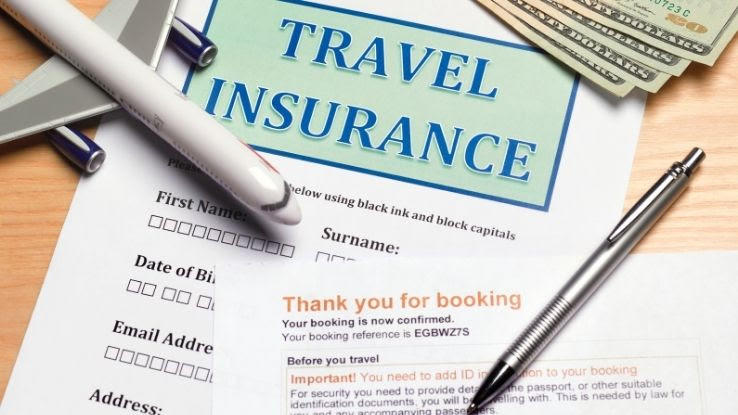The 4-Minute Rule for Pacific Prime
Table of ContentsThe Main Principles Of Pacific Prime Getting My Pacific Prime To WorkPacific Prime for DummiesLittle Known Facts About Pacific Prime.The Best Strategy To Use For Pacific Prime

This is since the data were gathered for a period of solid financial efficiency. Of the estimated 42 million individuals who were uninsured, all yet about 420,000 (about 1 percent) were under 65 years old, the age at which most Americans become eligible for Medicare; 32 million were grownups between ages 18 and 65, about 19 percent of all grownups in this age team; and 10 million were kids under 18 years of age, concerning 13.9 percent of all children (Mills, 2000).
These quotes of the number of persons without insurance are generated from the yearly March Supplement to the Current Populace Survey (CPS), conducted by the Demographics Bureau. Unless or else noted, nationwide price quotes of people without medical insurance and proportions of the populace with various kinds of protection are based on the CPS, the most commonly used source of price quotes of insurance policy coverage and uninsurance prices.
What Does Pacific Prime Mean?

Still, the CPS is particularly helpful since it produces yearly price quotes fairly swiftly, reporting the previous year's insurance coverage approximates each September, and due to the fact that it is the basis for a constant set of price quotes for even more than twenty years, enabling for analysis of fads in coverage with time. For these factors, in addition to the comprehensive use of the CPS in various other researches of insurance coverage that exist in this record, we depend on CPS price quotes, with restrictions noted.

The price quote of the variety of uninsured people expands when a populace's insurance status is tracked for numerous years. Over a three-year duration starting early in 1993, 72 million individuals, 29 percent of the united state population, lacked insurance coverage for at least one month. Within a single year (1994 ), 53 million people experienced at least a month without insurance coverage (Bennefield, 1998a)
6 out of every ten without insurance adults are themselves employed. Although working does enhance the probability that a person and one's member of the family will certainly have insurance, it is not an assurance. Even participants of households with 2 full time wage earners have nearly a one-in-ten chance of over at this website being without insurance (9.1 percent uninsured price) (Hoffman and Pohl, 2000).
Rumored Buzz on Pacific Prime
New immigrants account for a substantial percentage of people without medical insurance. One analysis has actually connected a significant part of the current growth in the size of the united state uninsured population to immigrants who got here in the nation between 1994 and 1998 (Camarota and Edwards, 2000). Recent immigrants (those who pertained to the USA within the previous 4 years) do have a high price of being without insurance (46 percent), however they and their kids make up simply 6 percent of those without insurance across the country (Holahan et al., 2001).
The partnership between medical insurance and access to care is well established, as recorded later in this phase. The partnership between health insurance and wellness outcomes is neither straight nor basic, a considerable medical and health and wellness services study literature links health insurance protection to improved access to care, far better quality, and enhanced individual and population wellness condition.
Levels of analysis for analyzing the effects of uninsurance. This conversation of wellness insurance coverage concentrates mostly on the U.S. population under age 65 due to the fact that virtually all Americans 65 and older have Medicare or other public protection. It concentrates specifically on those without any kind of health and wellness insurance for any type of length of time.
Our Pacific Prime PDFs
The problems faced by the underinsured are in some aspects comparable to those encountered by the uninsured, although they are normally much less serious. expat insurance. Uninsurance and underinsurance, however, involve distinctly different policy concerns, and the techniques for addressing them may vary. Throughout this research and the 5 records to adhere to, the main focus gets on persons without medical insurance and thus no aid in spending for health care beyond what is offered with charity and safeguard establishments
Wellness insurance is a powerful element impacting invoice of care because both individuals and medical professionals reply to the out-of-pocket cost of services - https://peatix.com/user/21635503/view. Health and wellness insurance policy, nevertheless, is neither essential neither adequate to get to medical services. The independent and straight impact of health insurance policy protection on accessibility to health and wellness services is well developed.
Others will get the wellness care they need also without medical insurance, by spending for it out of pocket or seeking it from suppliers that offer treatment complimentary or at highly subsidized prices. For still others, health and wellness insurance alone does not make sure receipt of care as a result of other nonfinancial obstacles, such as a lack of health care carriers in their neighborhood, minimal access to transport, illiteracy, or etymological and cultural differences.
The 6-Minute Rule for Pacific Prime
Official study concerning without insurance populaces in the United States dates to the late 1920s and early 1930s when the Committee on the Cost of Healthcare generated a collection of records concerning funding physician office gos to and hospital stays. This concern came to be salient as the numbers of clinically indigent climbed up during the Great Anxiety.